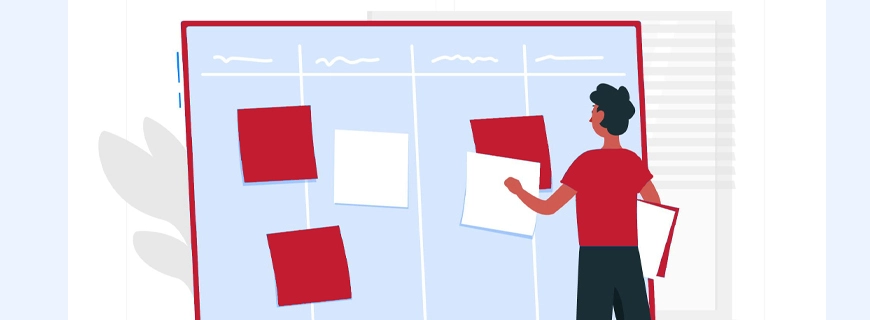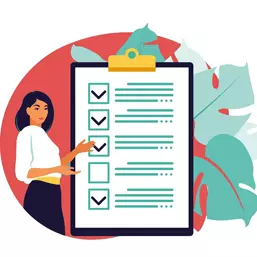
Outlining the Situation
When your work speaks for itself, don’t interrupt.
– Henry J. Kaiser
Introduction
The main advantage of creating an outline is that it helps you to organize your thoughts. The audience gets more out of a presentation when it is well-organized. They also are more likely to think that the speaker knows the subject thoroughly and has given some thought on how to present it.
In this module we will be considering a hypothetical presentation about a project that has just been completed, but the general approach we will consider is applicable to just about any type of presentation.
Often this approach is seen as being similar to creating a body. You start with the skeleton – the basic outline, the bare minimum of the speech in something like the shape that it will eventually take – and progress by adding meat to the bones, and layering the rest on top of that.
At key points of the presentation, specific issues will need to be confronted, and by allotting them a place in the basic outline you will be able to ensure that these are prioritized and addressed correctly.
Making a Simple Outline
Almost every project addresses a problem, an opportunity, or both. An effective way to introduce your speech is by outlining the situation that your project addresses. This approach forces you to get to the point right away.
In outlining the situation, try to avoid giving too much history or background. Most people won’t care about that sort of information. If you start out by discussing something people don’t care about, it will be hard to recapture their interest.

Provide only the background information people will need to understand the situation. Your audience in many cases may already know the background. Covering old ground will simply lead to a “here we go again” feeling in the room.
So instead of beginning with a history of the problem, the nature of the problem can be covered in a few sentences, and followed with a statement of what you as a group decided had to be done about it. It is beneficial to make reference to situations and occasions with which the audience is familiar. In doing this you will keep their attention by recognizing that their opinions mattered and were taken into account.
The introduction of a presentation is where you will often take and hold an audience’s attention, or lose it for good. It is wise, then, to keep an introduction brief and informative, and set the scene for the rest of the presentation.
In an introduction, there are just a few essential elements to keep in mind. First of all, you should introduce yourself in your capacity with regards to the project. Even if everyone there knows you, it helps to explain exactly why you are delivering the presentation. You should then give a brief overview of what the presentation seeks to address.
This will stop anyone in the audience from thinking “When are they going to get to the bit about x?”, and allow all present to concentrate on the presentation itself.

Identifying the Task That Needed to Be Completed
Your task description will be the organizing principle for the rest of your presentation. Most of what follows will be an account of what you did to complete the task.
One way to come up with a simple, clear task description is to imagine you are writing it for a teenager. How would you describe what you did to someone who knows very little about your work? This can obviously be tweaked depending on the audience, but it is worthwhile remembering that the audience to which you speak will all have their specialties in certain fields. Something that is perfectly evident to you may not be perfectly evident to many in your audience.
This does not mean that a lot of your speech should be taken up by lengthy explanations of what you do. Think of it in a similar way to a film. In most films we have periods of what the directors like to call “exposition”. They lay down the “back story”, telling us why what we are watching had to happen.
Film reviewers are very quick to criticize films which have lengthy spells of exposition, as all we really need are the essential details. We can piece the rest together for ourselves. Take the same approach to explaining the task that you were dealing with. Give the important details, and assume a basic level of understanding.
The result of having these brief explanations is that your wider presentation will then be set in a certain context, and it is in this context where the things you say will make sense. When you have completed the first draft of the presentation or speech it helps to then read over it and see if it would make sense to someone who is coming to the presentation without the information that you have.
Any terms which give space for confusion can then be explained a little bit better so that the audience can follow the presentation. If any remaining confusion persists, then a question-and-answer period can pick that up.
Making a List of the Steps You Took
If a presentation contains a list of actions, it’s a good idea to present the list on a slide or a flip chart. People have a hard time keeping more than three or four items straight in their head unless they see them displayed.
As you go through your list in your presentation, you can point to each item on your chart or slide. This will make it easier for people to follow along. It will also help people see where you are in your presentation, and how much longer it is likely to go on.

It is important to do this for a number of reasons:
- Firstly, if people are confused as to what exactly will be dealt with – and when – they are liable to lose concentration, and any key points you make in the presentation will resonate less as a result of people wondering what is next.
- Secondly, there will be people in your audience who, although they are keen to listen closely to the presentation, will still wonder when their particular area of interest will be dealt with. We change how we listen depending on our familiarity with the topic.
- Thirdly, if people are concerned about the length of the presentation, their minds will begin to wander as it passes the point where they would have hoped for it to finish.
Making the audience aware of the structure of your presentation in advance may seem to some like an invitation for them to tune in and tune out as the topics suit. However, having a table of contents allows people to keep concentration.
In the areas where they are less informed than in others, they will listen in order to further inform themselves. In their areas of expertise they will listen not more closely, but differently – giving themselves a chance to contribute after the presentation if necessary.
A good structure does not just help the writer and deliverer of a presentation, but the audience too. It is easier to maintain concentration if one is aware of what they should be concentrating on and this will mean that you carry the audience with you over the course of your presentation, allowing them to be better informed, reassured, and prepared at the end of your presentation than they were at the beginning.

Disclosing the Results
Revealing the results of a project involves answering a few basic questions:
- Did the project achieve its goal?
- Were there any unexpected consequences?
- What’s next?
The first question may seem like an obvious one with an obvious answer. Simply put, either it achieved its objective or it did not. However, any project will have stages of success and stages of failure. In deciding whether a project achieved its goal it is important to refer back to the questions and the brief as set out in the introduction to the presentation.
There was a plan to achieve something – did it succeed? If so, did it come through on, or ahead of, schedule? Was any outside help required? And if it failed, did it fall some distance short or was it close enough to be termed a “deferment” rather than a straight failure?
As for unexpected consequences, these can arise in any project. In preparation for a project, it is common to look ahead at potential problems and decide how these can be avoided or addressed. However, the best laid plans can still always run up against unforeseen problems – and, for that matter, unforeseen benefits.
These can change the shape of a project and lead to the redrawing of an entire brief. Often the kind of on-the-spot management that is required to handle such a situation can be the difference between success and failure, and any conclusion should deal with these circumstances, how they arose, and how they were dealt with.
At the end of the presentation, it is safe to say that the audience will be better informed as to the extent of the success or failure of a plan. Their minds will then, naturally, turn to the matter of where things will go next. Assuming that the business itself has not been wound up, there will be follow-up work to do, and getting on with that work will be the priority.
The question of “What next?” can be answered with reference to the presentation you have just delivered. Everyone will now be clearer on the consequences of the previous months, and now is the best time to lay down the next plan.
Practical Application
Marco met with Linda in her cubicle. He had received the outline of her speech and read it beforehand. Linda asked him, “So, what did you think of the outline?”
Marco said, “I thought it was very dynamic. You really thought about what questions the audience would like answered, and you tried to address them.” He said, “The only part of the outline that might need some revision is the beginning.”
Linda said, “What do you see that you thought needed changing?”
Maro replied, “Well, in the beginning you give a lot of background and it takes a while to get to the most dynamic parts of your speech. I would say keep the introduction brief, in order to keep your audience’s attention.”
Linda used Marco’s feedback, and she was able to hook her audience from the very beginning of her speech.





